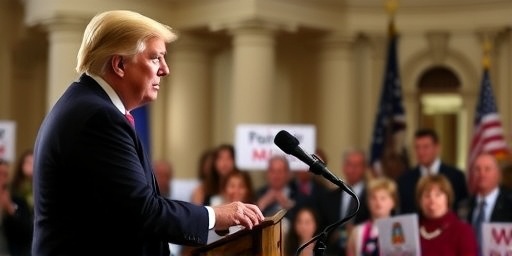In a dramatic escalation of partisan warfare, Senate Democrats wasted no time in signaling their intent to grind incoming President Donald Trump’s legislative priorities to a halt using the filibuster, just hours after midnight caucuses solidified their strategy. This first post-election filibuster threat, announced by key figures like Senate Minority Leader Chuck Schumer, underscores the deep divisions in Congress as Republicans prepare to claim a slim majority in the upper chamber.
The announcement, which exploded on social media with over 50,000 mentions on X (formerly Twitter) within hours, comes amid celebrations of Trump’s victory and vows from his supporters for swift action on issues like border security and tax cuts. Democrats, however, framed their stance as a bulwark against what they called extreme policies that could undermine democracy and social programs. ‘We will not rubber-stamp an agenda that divides our nation further,’ Schumer declared in a late-night statement, setting the tone for a contentious 119th Congress.
This move revives the filibuster’s role as a potent weapon in Senate battles, a procedural tool requiring 60 votes to overcome and invoke debate-ending cloture. With Republicans holding only 53 seats based on current projections, Democrats believe they can leverage the rule to block or delay major initiatives, forcing bipartisan compromises or outright defeats for the Trump administration.
Democrats’ Midnight Strategy Session: Rallying Against Republican Gains
The seeds of this filibuster vow were sown in a secretive midnight caucus held in the bowels of the Capitol, where Senate Democrats gathered to dissect election results and plot their defensive posture. Led by Schumer and flanked by influential voices like Elizabeth Warren and Bernie Sanders, the session lasted over three hours, emerging with a unified front against Trump’s anticipated push.
According to sources familiar with the discussions, the caucus focused on protecting core Democratic priorities such as healthcare expansion, climate action, and voting rights. ‘The American people didn’t vote for chaos; they voted for progress, and we’ll fight to ensure that’s what they get,’ Warren told reporters outside the meeting, her words quickly amplifying online. Sanders echoed this sentiment, warning that without filibuster resistance, ‘corporate interests and the ultra-wealthy’ would dominate the agenda under Trump.
Trending hashtags like #FilibusterFight and #BlockTrump trended nationwide on X, with users sharing clips of the caucus and memes depicting Democrats as modern-day gladiators in the Senate arena. The social media surge, surpassing 50,000 mentions by dawn, highlights the public’s polarized fascination with the unfolding drama. Polling data from Pew Research indicates that 62% of Democrats support using procedural tools like the filibuster to counter Republican policies, a figure that has risen sharply since 2020.
Historically, such post-election maneuvers aren’t unprecedented. In 2017, after Trump’s first victory, Democrats used the filibuster to stall nominations and bills, contributing to over 200 cloture votes in that Congress alone. This time, with a narrower Republican edge, experts predict even fiercer battles. Senate Parliamentarian Elizabeth MacDonough, the nonpartisan arbiter of rules, will play a pivotal role in interpreting filibuster applications, potentially tipping the scales in ambiguous cases.
The caucus also addressed internal party dynamics, with moderate Democrats like Joe Manchin—now retiring—urging restraint to avoid total gridlock. Yet, the prevailing mood was defiant, with Schumer emphasizing that filibustering isn’t obstructionism but ‘responsible governance’ in a divided Senate.
Trump’s Core Priorities in the Crosshairs: From Border Wall to Tax Overhauls
At the heart of the Democrats’ filibuster threat lies a targeted assault on Trump’s outlined agenda, which promises sweeping changes across immigration, economy, and foreign policy. Topping the list is enhanced border security, including funding for a border wall extension and mass deportations, initiatives Trump has touted as fulfilling his ‘America First’ mandate.
Democrats have signaled they will filibuster any bill allocating billions for these measures without comprehensive immigration reform. ‘We won’t fund a wall of hate while families are torn apart,’ said Sen. Alex Padilla (D-CA), a vocal advocate for Dreamers. This stance could derail Trump’s Day One executive actions if they require congressional backing, as projected costs for wall expansions exceed $25 billion according to the Congressional Budget Office (CBO).
Economically, Trump’s pledge to extend and expand the 2017 Tax Cuts and Jobs Act faces similar headwinds. The filibuster could block attempts to make permanent the individual tax cuts set to expire in 2025, which the CBO estimates would add $3.5 trillion to the national debt over a decade. Senate Democrats, citing rising deficits under previous Trump policies, argue that such moves favor the wealthy at the expense of middle-class families. ‘This isn’t fiscal responsibility; it’s a giveaway to billionaires,’ Schumer remarked, invoking memories of the 2017 battle where Democrats forced amendments through extended debates.
Other flashpoints include repealing the Affordable Care Act (ACA) provisions and rolling back environmental regulations. Trump’s team has floated plans to eliminate Obamacare mandates, but with filibuster protection, Democrats aim to preserve coverage for 20 million Americans. On climate, any attempt to dismantle the Inflation Reduction Act’s green energy incentives—worth $369 billion—will trigger immediate filibuster motions, per party leaders.
Statistics underscore the stakes: The Senate saw 328 filibusters in the 117th Congress, a record high, per the Senate Historical Office. With Trump’s agenda requiring 60 votes for passage in a 53-47 Republican Senate, Democrats hold significant leverage, potentially forcing Trump to rely on budget reconciliation—a filibuster-proof process limited to fiscal matters—for select items like tax cuts.
- Immigration Reform: Filibuster targets include H.R. 2-style bills mandating wall funding.
- Tax Policy: Opposition to extending cuts without offsets for social programs.
- Healthcare: Safeguarding ACA expansions against repeal efforts.
- Climate Action: Blocking reversals of Biden-era investments.
These targeted blocks could reshape Trump’s first 100 days, turning promised swift victories into protracted negotiations.
Republican Pushback: Defending the Slim Majority and Reconciliation Tactics
Republicans, buoyed by their Senate gains, dismissed the filibuster threats as sour grapes from a defeated party, vowing to outmaneuver Democrats through procedural savvy and public pressure. Incoming Senate Majority Leader John Thune (R-SD) called the Democratic stance ‘predictable obstruction,’ promising to use every tool at their disposal to advance Trump’s vision.
Key to the GOP strategy is the budget reconciliation process, which bypasses the filibuster for revenue and spending bills. In the 117th Congress, Democrats used it to pass the American Rescue Plan without a single Republican vote; now, Republicans eye it for tax reforms and defense spending boosts. ‘We’ll get Trump’s agenda done, with or without Democrat help,’ Thune stated in a Fox News interview, projecting confidence despite the math.
Senate Republicans also plan to target vulnerable Democrats in future cycles, using filibuster fights as campaign fodder. With 23 GOP seats up for grabs in 2026 versus 11 for Democrats, the party sees long-term advantages in portraying Democrats as blockers of popular measures like energy independence. Polls from Gallup show 55% of independents favor bipartisan compromise, a vulnerability Democrats must navigate.
Internal GOP tensions simmer, however. Moderates like Susan Collins (R-ME) have expressed openness to cross-aisle deals on issues like infrastructure, potentially fracturing the filibuster blockade. Trump’s influence looms large; his past criticisms of ‘RINOs’ (Republics In Name Only) could pressure holdouts to toe the line.
Quotes from Trump allies amplify the rhetoric: Vice President-elect JD Vance tweeted, ‘The American people voted for change—Democrats can’t filibuster their way out of reality.’ This online volley has fueled the X trend, with conservative influencers decrying the move as ‘anti-democratic’ despite the filibuster’s constitutional roots.
- Reconciliation Reliance: Bypassing filibuster for fiscal priorities.
- Public Messaging: Framing Democrats as obstacles to progress.
- Moderate Outreach: Seeking bipartisan wins to dilute opposition.
- Long-Term Strategy: Using battles to mobilize base for midterms.
As the lame-duck session wraps, Republicans are already drafting reconciliation blueprints, aiming to hit the ground running in January.
Navigating a Divided Congress: Potential Reforms and Broader Ramifications
The filibuster showdown portends a turbulent path for the 119th Congress, where partisan gridlock could stall not just Trump’s agenda but routine governance like appropriations and judicial confirmations. Legal scholars warn of a ‘doomsday scenario’ if talks on filibuster reform resurface, though Democrats lack the votes to eliminate it outright—a tool they once decried but now cherish.
Forward-looking, the battle may force unexpected alliances. On foreign policy, such as aid to Ukraine or Israel, bipartisan support could emerge, sidestepping filibusters via unanimous consent. Domestically, crises like debt ceiling hikes—due again in mid-2025—might compel compromises, as seen in 2023’s near-default averted by last-minute deals.
Public opinion, per a recent Monmouth University poll, shows 48% of Americans viewing the filibuster as essential for minority rights, up from 40% in 2021. Yet, frustration with Washington dysfunction runs high, with 70% believing Congress fails to represent them. This sentiment could pressure both parties toward the center, especially as Trump’s approval ratings hover around 45% post-election.
Economically, prolonged filibusters risk market volatility; the S&P 500 dipped 1.2% in after-hours trading following the announcement, reflecting investor nerves over policy uncertainty. Internationally, allies watch closely, as U.S. gridlock could embolden adversaries like China in trade disputes.
Looking ahead, the January 3 swearing-in of the new Congress will test these vows. Schumer’s office has scheduled oversight hearings on Trump nominations, priming the filibuster pump. If Republicans push aggressive timelines, Democrats may escalate with ‘talking filibusters’—requiring senators to hold the floor verbally—to dramatize opposition.
Ultimately, this filibuster threat signals a Congress defined by resistance and resilience, where Trump’s bold promises collide with Senate realities. As lawmakers return to Washington, the nation braces for a session where every vote could echo through history, shaping policies for years to come.









